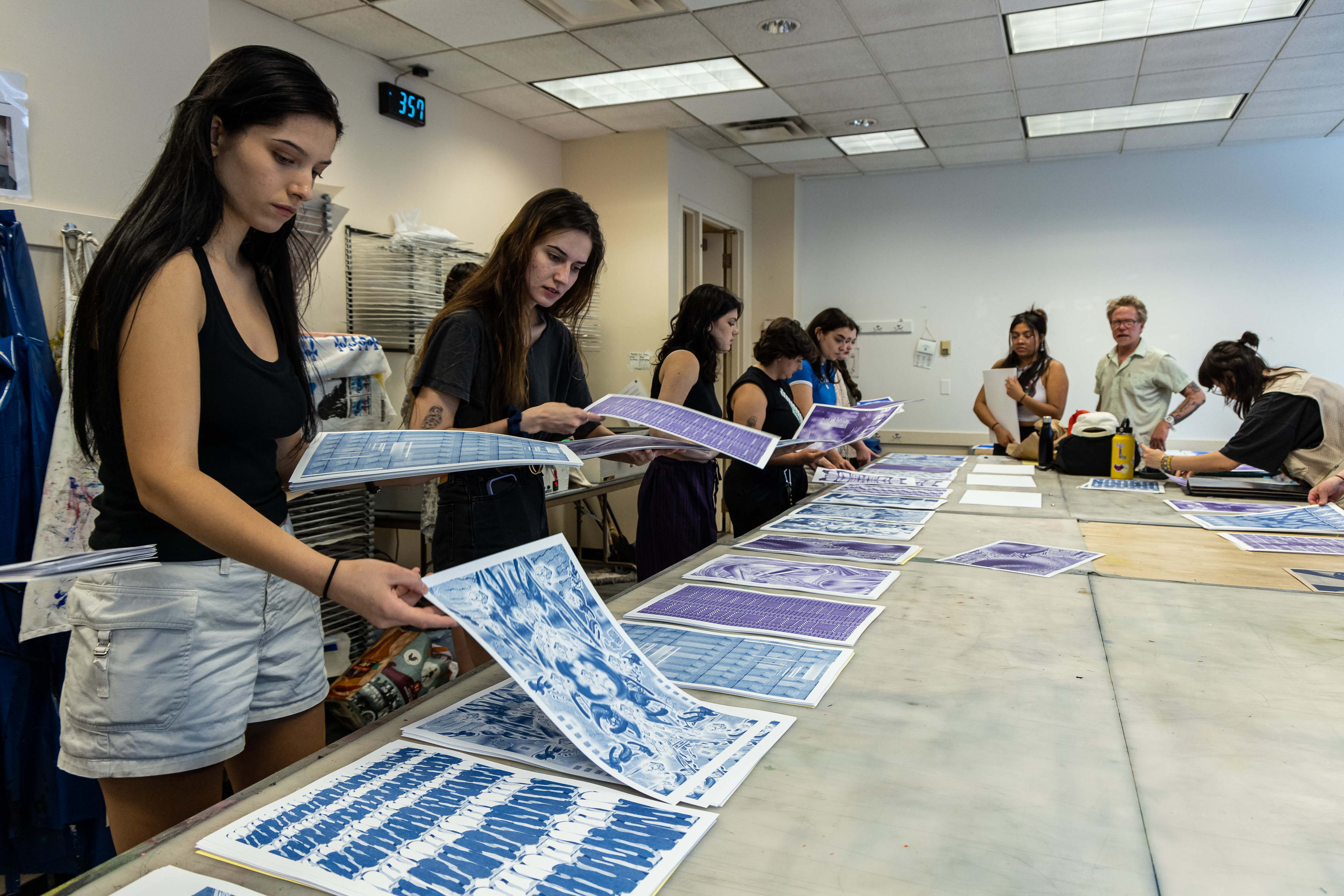
Students working with the prints they have created. (Photo by Jeff Carrion/DePaul University)
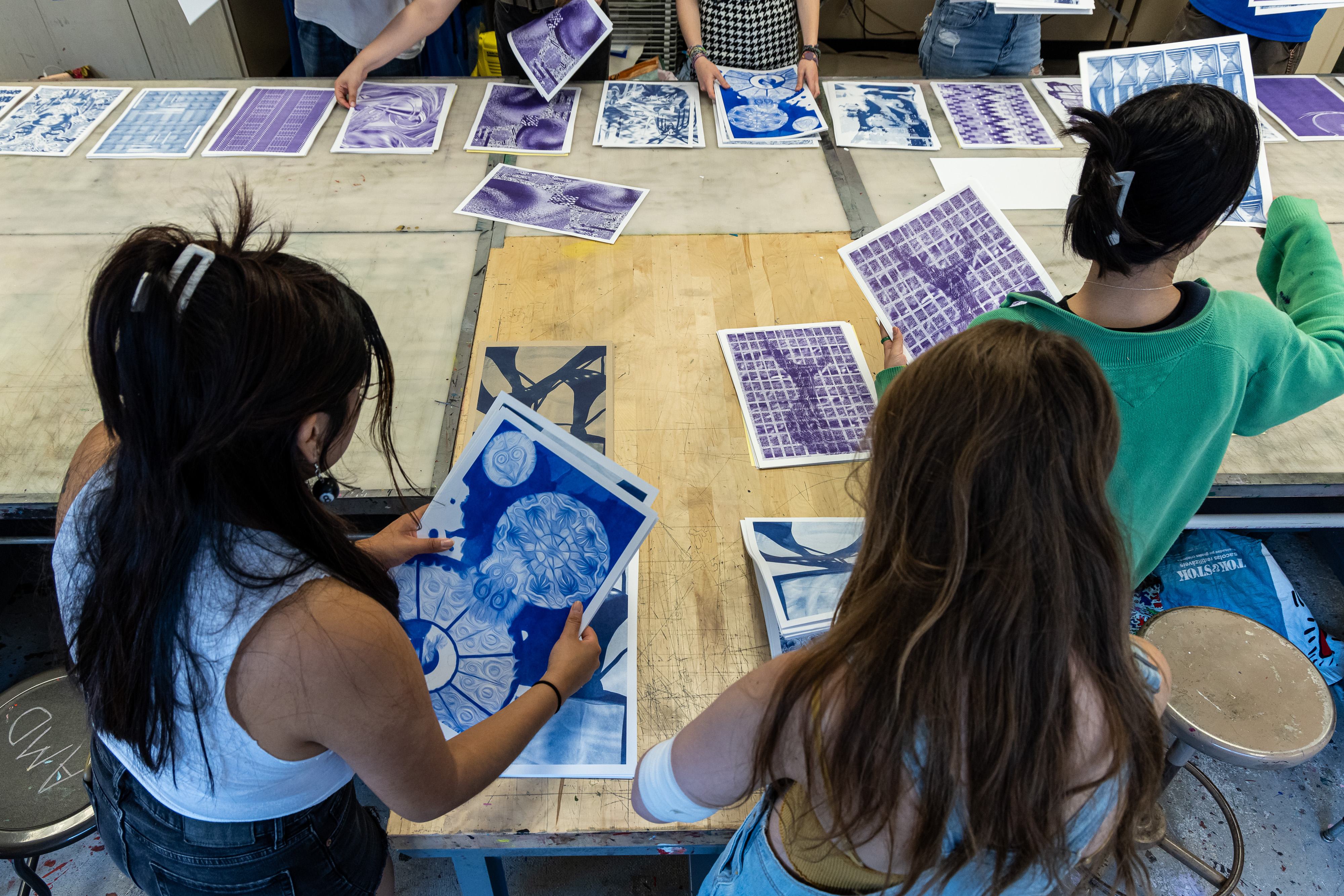
Students chose artworks to bring to Berlin. (Photo by Jeff Carrion/DePaul University)
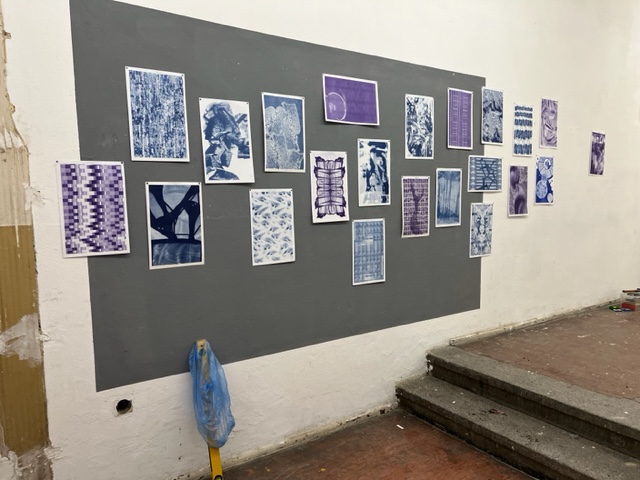
Students view their gallery collection of risographs. (Photo by Zack Ostrowski/DePaul University)
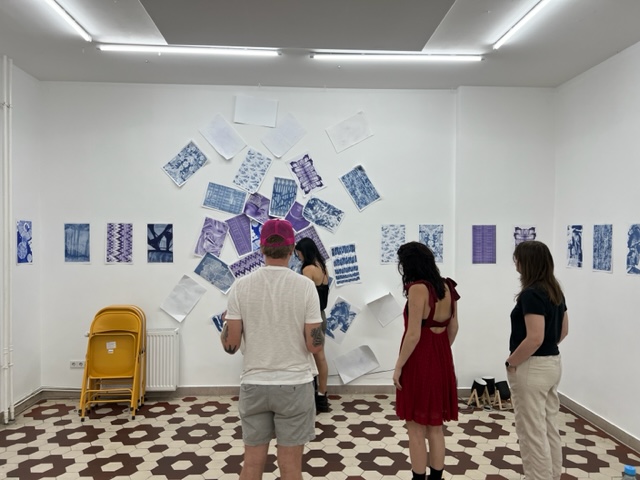
Study abroad students preparing their prints for the gallery. (Photo by Zack Ostrowski/DePaul University)

Faculty and students gather around the prints. (Photo by Jeff Carrion/DePaul University)
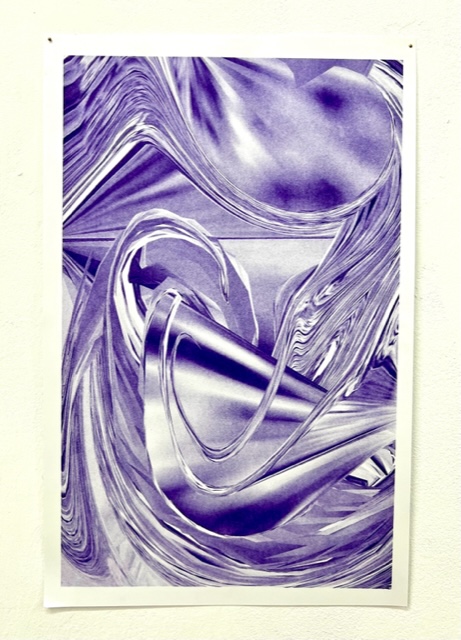
A risograph print created by the students. (Photo by Zack Ostrowski/DePaul University)
After spending days exploring Berlin this summer and analyzing its art scene, Cam Houcek and her DePaul classmates displayed their work at some of the city’s many art galleries. Blue and purple risograph prints hung on the walls, and music played softly in the background. Classmates dressed up as mimes and interacted with Berliners, who wandered into the gallery to engage with the group’s artwork.
“It became a really cool experience of learning to appreciate what goes into a gallery, but also making it something that's your own, special and significant to you,” says Houcek, a senior majoring in communications studies. “We were able to have so much fun with it.”
As DePaul prepares to hold a Study Abroad Fair for students on Sept. 26, students and faculty reflected on their recent experiences learning in Berlin.
Houcek is among 21 students who participated in an interdisciplinary study abroad course, taught by Zack Ostrowski in graphic art and Greg Scott in sociology. The course examined the intersection of sociology, community and the art world, beginning in the classroom during spring quarter and culminating in a two-week immersion in Berlin’s thriving art scene.
“We were excited that study abroad has a mechanism set up to support interdisciplinary collaboration,” says Ostrowski, an associate professor in The Art School at DePaul. “We enjoy that mode of teaching quite a bit.”
Making art in Chicago
The Berliner spirit of an accessible art community for all was built into the course. “From a sociological perspective, what we call ‘art’ is always a collective affair, from the sourcing of materials that go into a work to the distribution of it in the marketplace and everything in between,” Scott says.
Students from all majors were welcome in the course, and, in addition to reading and discussion, they created their own art. The students collected iconic images from Chicago and Berlin, such as deep-dish pizza and Berlin’s distinctive crosswalk signs, and transformed them into a series of abstract artworks.
“Community work was the cornerstone of the art and class,” Houcek says.
In addition to creating the series of risograph prints, the students edited and collectively curated the final pieces into a cohesive body of work that reflected their own sociological understanding and aesthetic tastes. These were the works they brought to display at two different galleries during the trip.
Berlin as a model art community
“Berlin is an ideal location for discussions surrounding sociology and art,” Ostrowski says. The relatively low cost of living, the government’s support of artists, and the social changes that accompanied the fall of the Berlin wall created an ideal setting for a boom of creativity.
“There was a lot of free space that people were self-organizing and taking over to create self-governing art spaces and art collectives,” Ostrowski says.
During the spring quarter, the class discussed how the German government supports a wide range of artistic outlets.
“In this class we learned collaboratively, made and exhibited work collectively, and together developed tools for examining and understanding the Berlin art world as a uniquely complex system shaped by historical, political, cultural and economic forces,” Scott says. By supporting gallery options for entry-level, mid-level, and well-established artists alike, Berlin is able to cultivate the lively art community it is known for.
“Being able to see a lot of smaller institutions, rather than just the big institutions that we're used to seeing in the U.S., was helpful for me as someone who is striving to create smaller spaces for artists,” says Connor, a senior who has worked in Chicago as an intern at the DePaul Art Museum. “Each gallery offered something different.”
Together, the class learned how spaces for local and experimental art encourage growth of a more robust and inclusive art community. “When you meet people in Berlin, the first thing they ask you isn't necessarily about your art or what recognition you have. They care more about getting to know you as a person,” says Connor. “That openness of the community makes spaces more accessible to people who might feel more like an outsider.”
DePaul students interested in combining travel and academics can learn more about Study Abroad online.